Gardening enthusiasts often struggle to keep their gardens colorful and vibrant as the summer progresses. Planting the right flower seeds in July can ensure the garden continues blooming beautifully into the late season.
Whether it’s hardy perennials, biennials, or quick-growing annuals, sowing new seeds in July can refresh the garden’s appearance.
By choosing the right flowers, gardeners can achieve a stunning display of colors that lasts beyond the peak summer months.
#1 – Zinnias
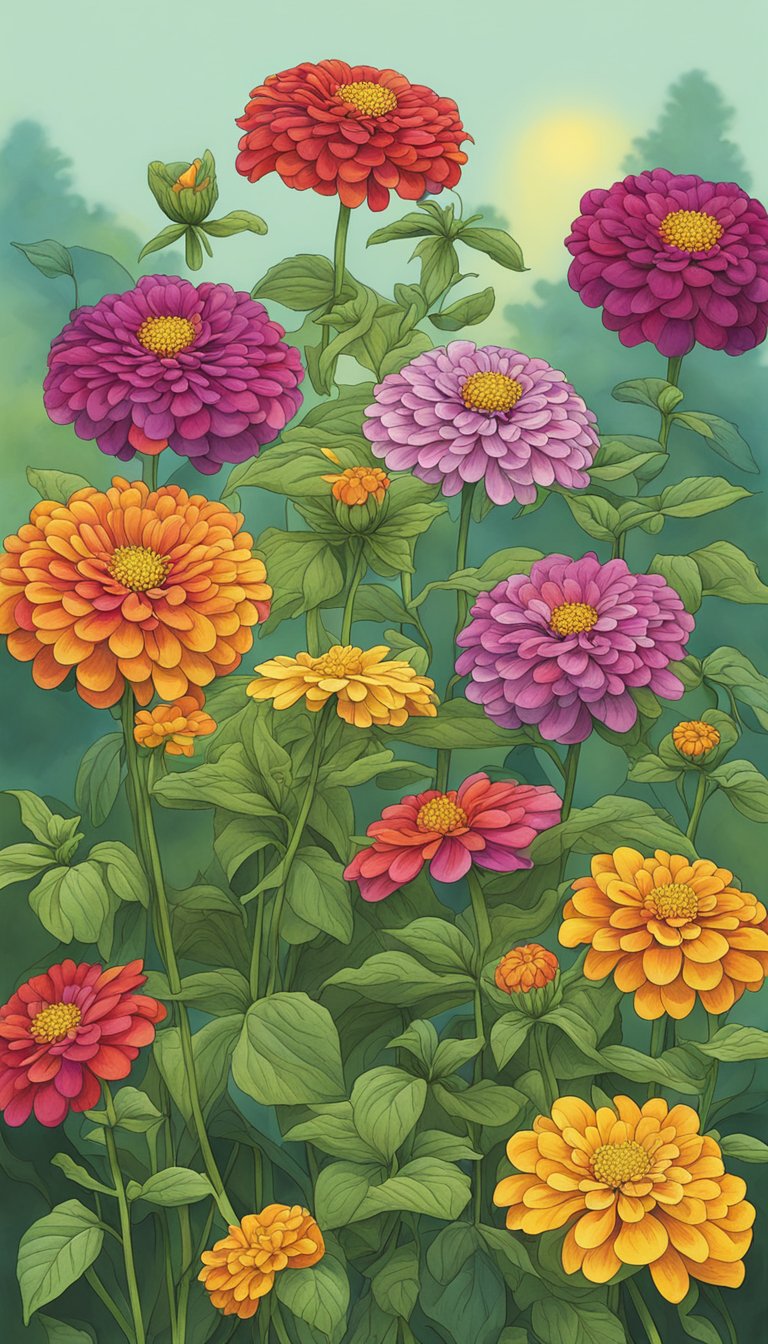

Zinnias are a fantastic choice for a late-season garden. These flowers are known for their bold and bright colors, making them a favorite among gardeners. They thrive in sunny locations and well-drained soil.
Planting zinnia seeds in July can create a beautiful display during late summer and fall.
It’s important to plant them in gaps within perennial borders or in dedicated rows in a cut flower garden. The soil should be raked well to allow easy root growth.
Zinnias grow best when sown shallowly, around 0.1 inches (3mm) deep, and spaced about 12 inches (30cm) apart. They prefer a daytime temperature range of 74-84°F (23-28°C), although they can tolerate a minimum temperature of 60°F (16°C).
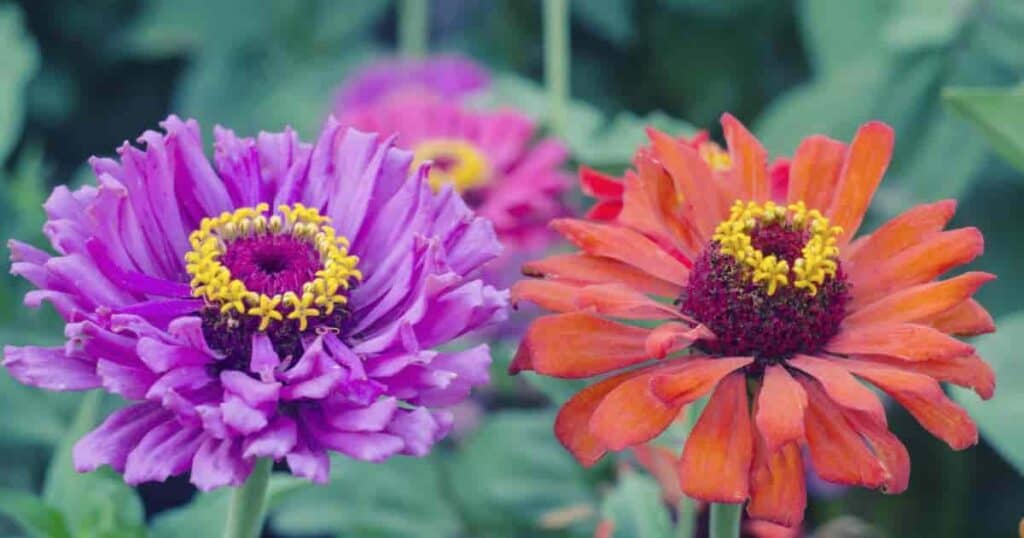
These flowers are sensitive to frost, so planting them after the last frost date in your region is crucial.
For continuous blooms, sowing a round of seeds every week or so for several weeks can extend the flowering period and keep the garden vibrant.
Zinnias are easy to grow and attract butterflies and pollinators, adding life to the garden. This makes them a delightful addition to any gardener’s collection, especially for those looking to brighten their garden in the latter part of the growing season.
#2 – Sweet Alyssum
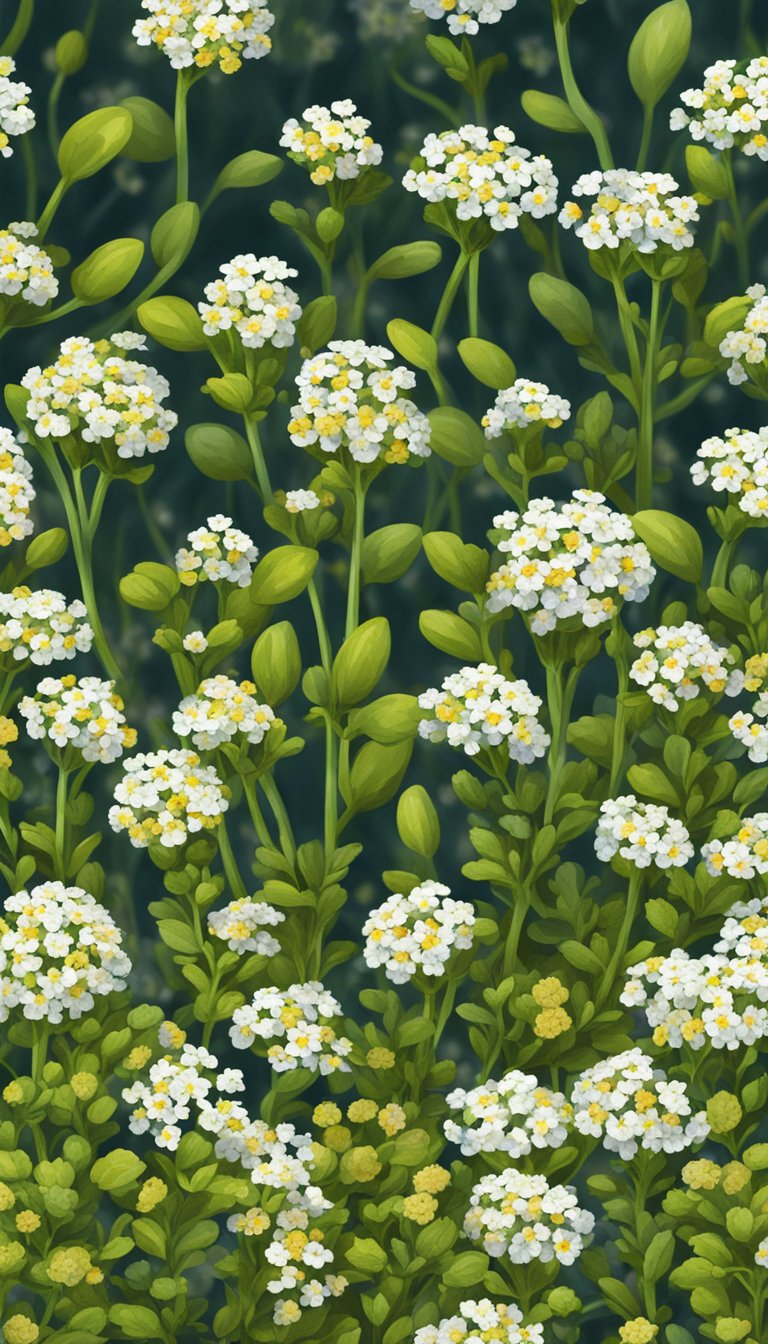

Sweet Alyssum is a charming flower known for its small, fragrant blooms. It’s particularly loved for its ability to create a beautiful, low-growing carpet of flowers.
To grow Sweet Alyssum from seed, it’s best to start indoors about 4-5 weeks before planting outside.
Keep the soil temperature between 65-75ºF, and use a humidity dome to help seeds germinate.
Once seeds germinate, which usually takes around 5-14 days, thin the seedlings so they are about six inches apart.


When transplanting outdoors, ensure there’s no danger of frost.
Sweet Alyssum grows quickly and will cover the ground with its tiny, cross-shaped flowers in about two months.
This flower works well in flower beds, herb gardens, and vegetable gardens. Its gray-green leaves are slightly hairy and narrow, adding to its aesthetic appeal.
Sweet Alyssum is a low-maintenance plant, making it a great choice for gardeners looking for an easy yet beautiful addition.
#3 – Calendula
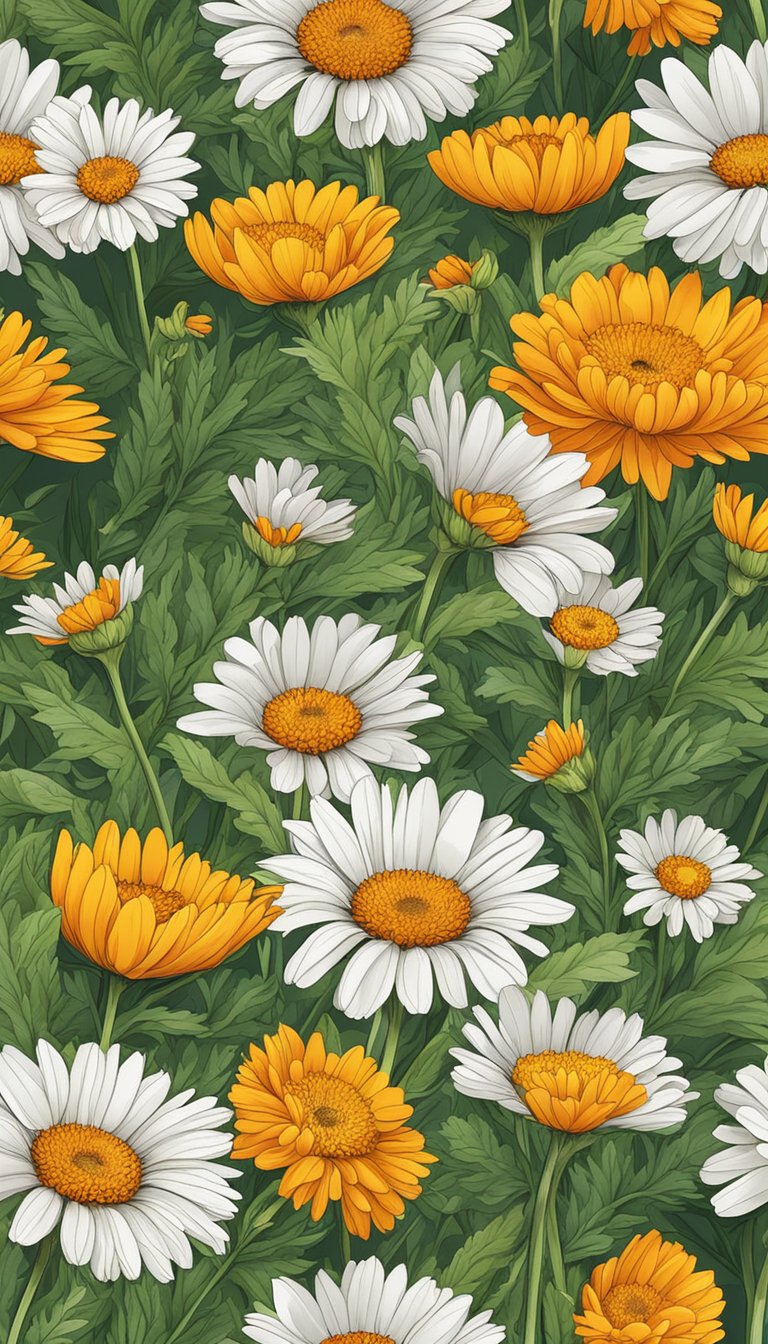

Calendula, often known as pot marigold, is an easy-to-grow flower. This bright, cheerful plant is perfect for sowing in July. Its vibrant orange and yellow blooms bring color to late summer gardens.
Calendula seeds can be sown directly into the soil. They enjoy full sun and well-drained soil. Once planted, calendula flowers are known for their fast growth.
These flowers are also beneficial as companion plants. They can help deter pests and attract helpful insects.
For those interested in medicinal plants, calendula is a great choice. It has been used in herbal remedies for its anti-inflammatory properties. Many gardeners grow calendula for teas and skincare products.
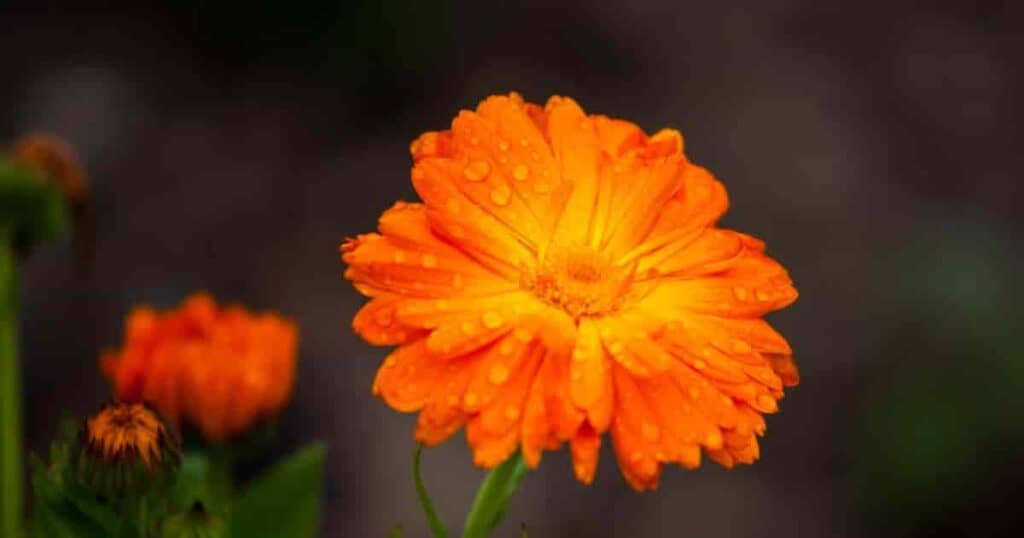

Calendula is not only easy to grow but also self-seeds. This means once you plant it, you’ll likely see it return year after year. Its ability to self-seed without overtaking the garden makes it a gardener’s favorite.
#4 – Black-Eyed Susan
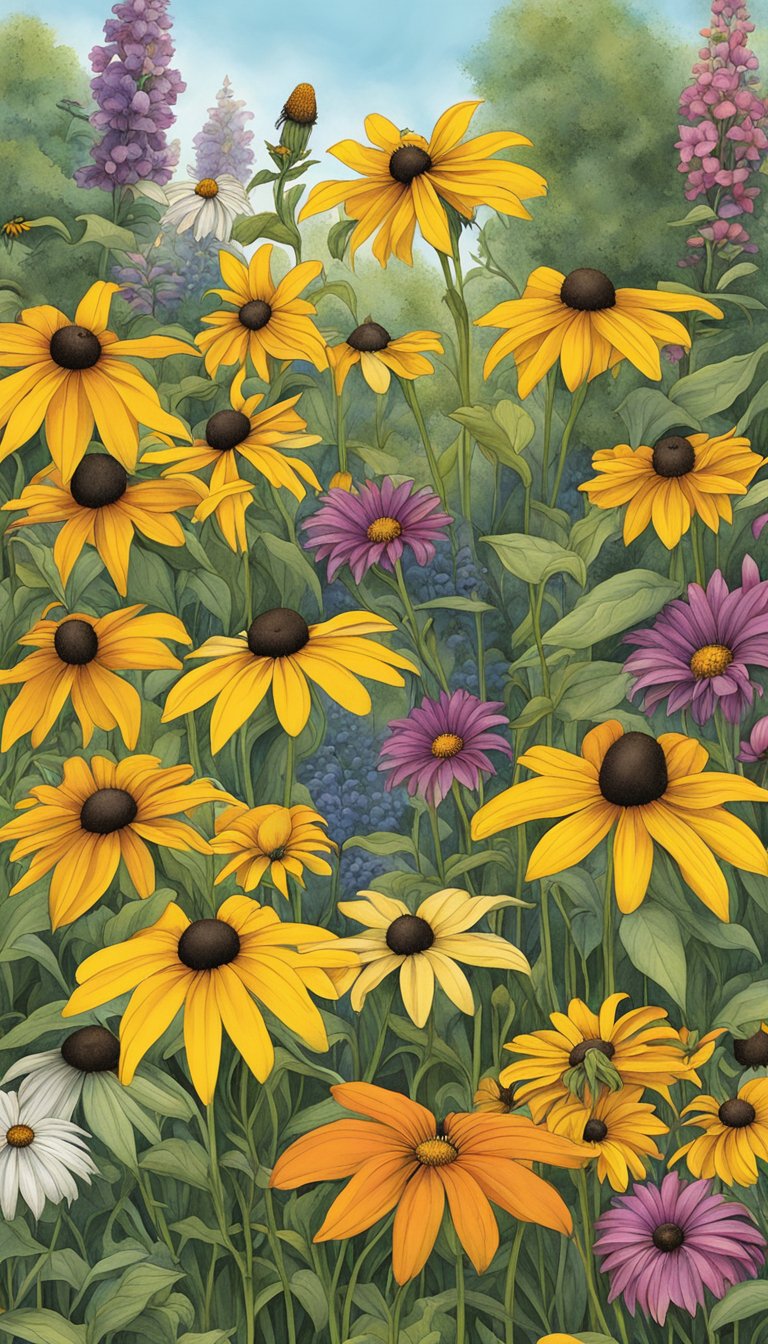

Black-Eyed Susan, also known as Rudbeckia, is a popular choice for late-season color. These flowers are known for their bright yellow-orange petals and dark centers.
Black-Eyed Susans can be started indoors or sown directly in the garden.
When starting indoors, use a seed starting mix and press the seeds onto the moist growing medium. The seeds need light to germinate, so do not bury them.
For direct sowing, wait until daytime temperatures are around 70 degrees Fahrenheit.
Scatter the seeds, cover them lightly with soil, and keep the soil moist.
Thin the seedlings 6-12 inches apart for dwarf varieties and 18-30 inches apart for larger ones.
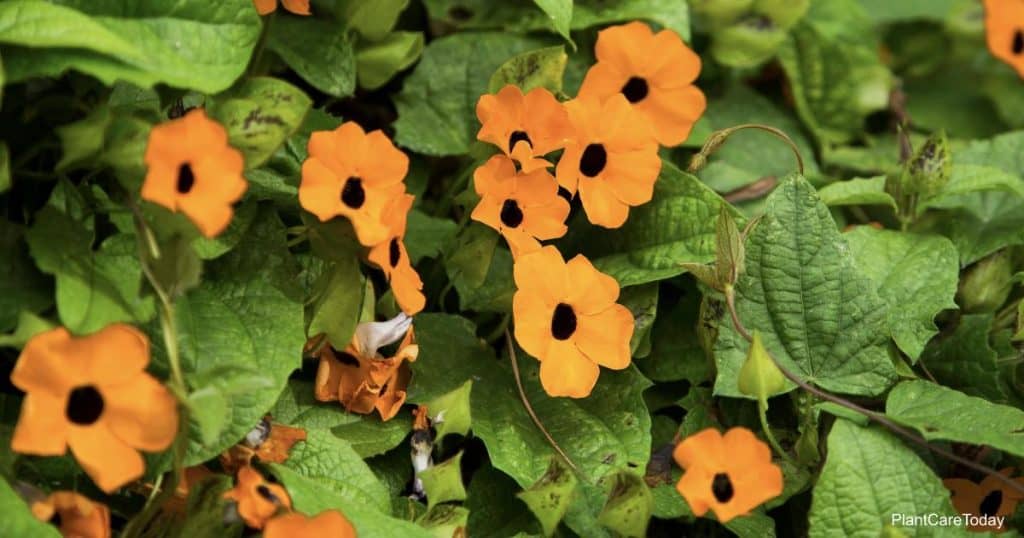

These plants thrive in full sun and well-drained soil. They can tolerate drought once established, making them low-maintenance.
Most gardeners sow the seeds as late as July, and it typically takes 2-3 months for the flowers to bloom.
You can enjoy their vibrant colors in late summer and fall by planting in July. Black-Eyed Susans can be a beautiful addition to any garden. They are versatile and add a splash of color to the landscape.
#5 – Nasturtiums
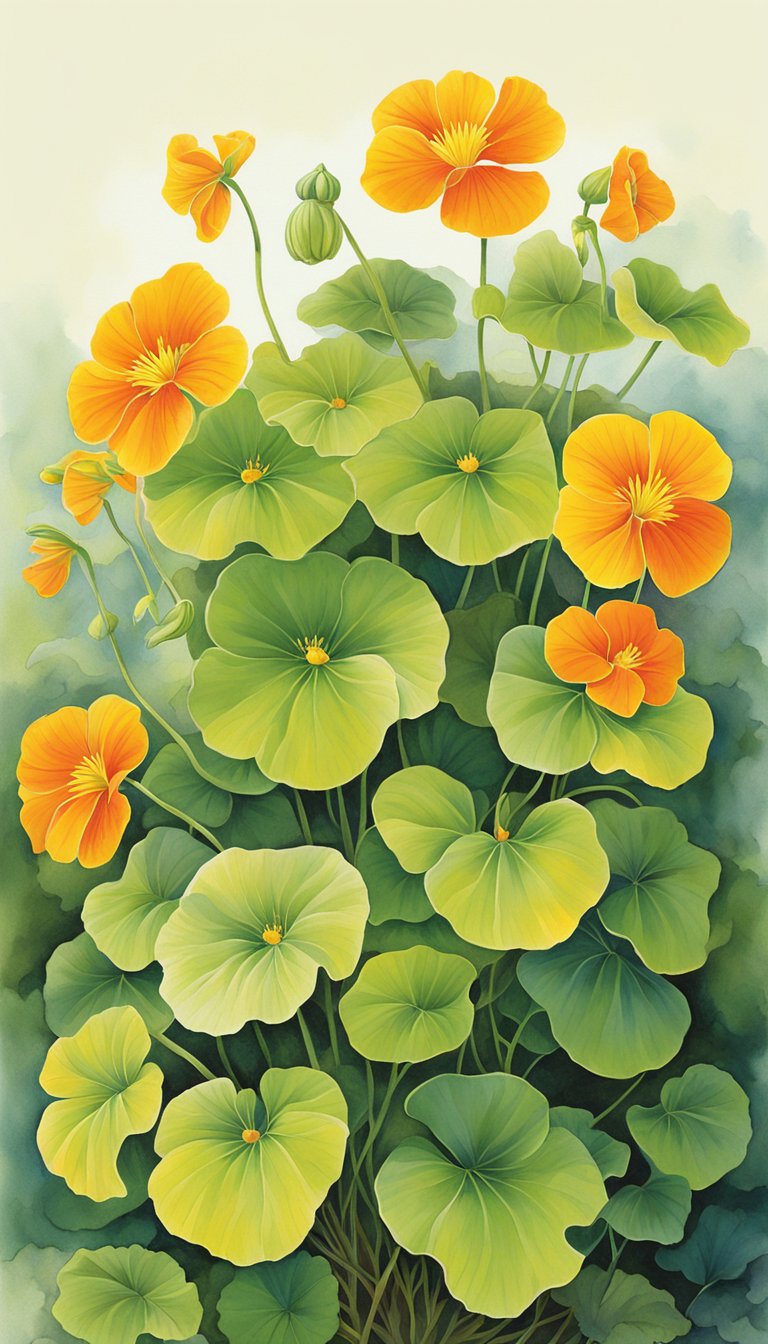

Nasturtiums bring a burst of color to any garden with their vibrant flowers. They can be sown in July, on the ground, or in containers. It’s important to wait until after the last frost has passed.
These flowers are easy to grow from seed. They tend to do well even in poorer soils, which makes them versatile for many gardens.
Nasturtiums are not only beautiful but also edible. The leaves and flowers can be added to salads for a peppery flavor. They are a popular choice for kitchen gardens.
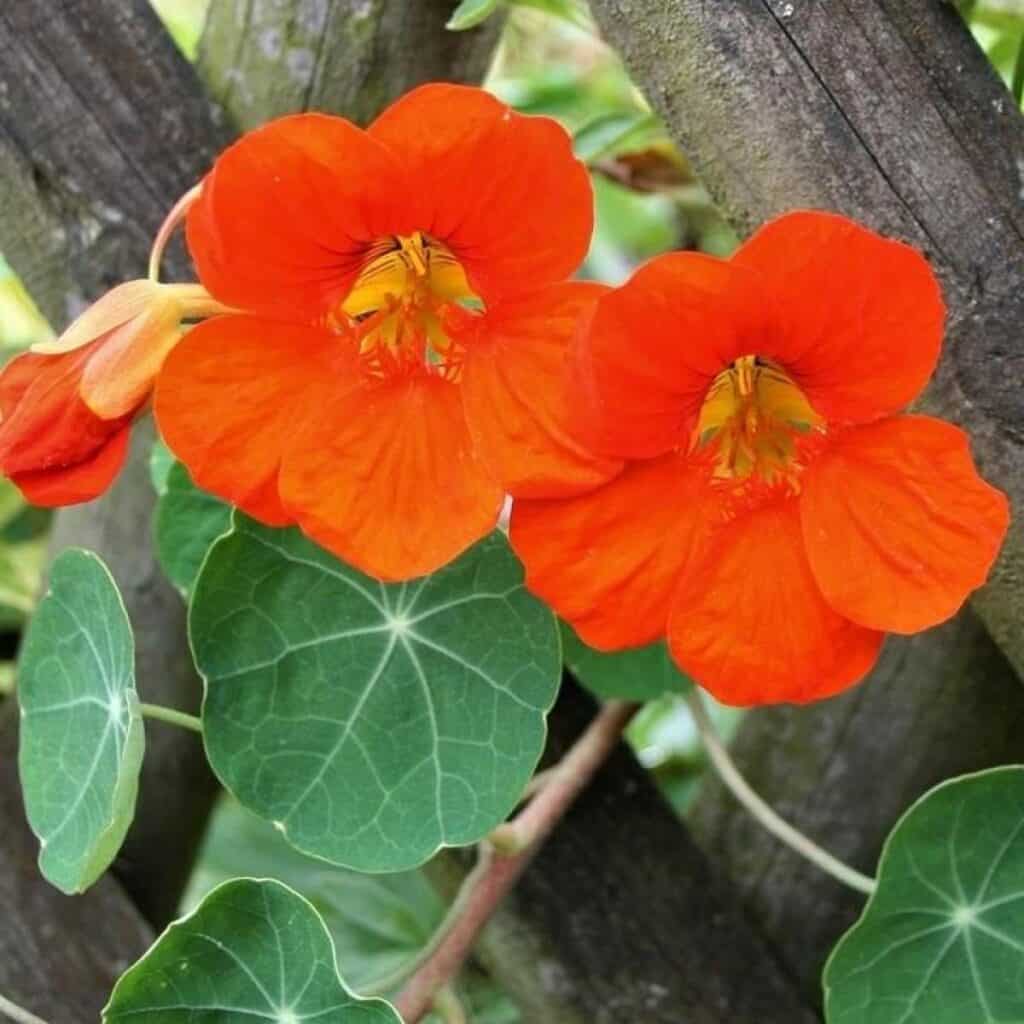

Direct seeding is recommended, as nasturtiums can be picky about being transplanted. Planting them directly avoids disturbing their roots.
They will bloom from late summer into the fall if planted in July. This extends the growing season and keeps the garden colorful for longer.
Nasturtiums can also act as companion plants. They help to deter pests, which benefits nearby crops.
Benefits of Sowing Flower Seeds in July
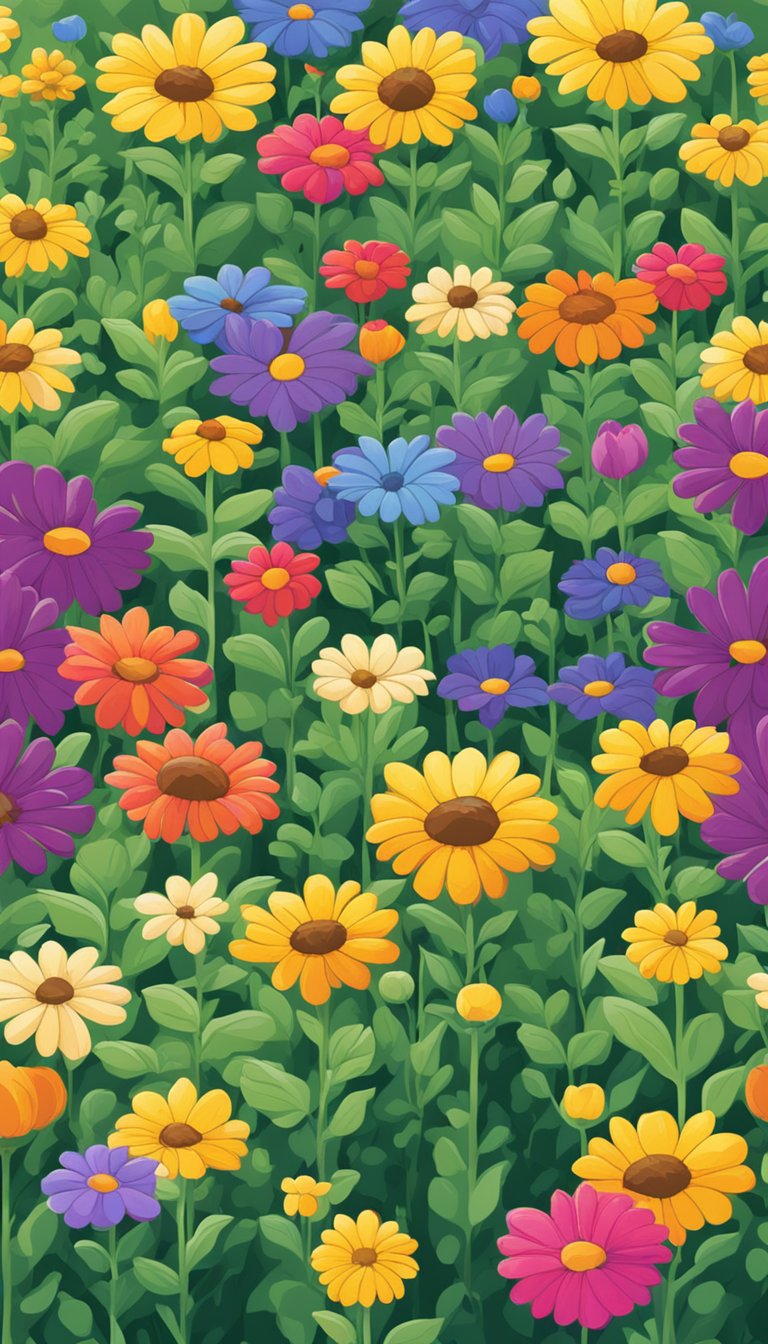

Planting flower seeds in July can extend the blooming season, take advantage of ideal growing conditions, and enhance the garden’s aesthetics with vibrant colors.
Extended Blooming Season
Sowing flower seeds in July allows flowers to bloom later in the year. This helps keep the garden colorful well into fall. Flowers like Black-Eyed Susans and sunflowers are perfect for this purpose.
They take only a few months to grow from seed to flower, offering continuous blooms through the end of summer and into fall. This creates a seamless transition of colors and makes the garden look alive and beautiful for a more extended period.
Ideal Growing Conditions
July provides excellent growing conditions for many flower seeds. The soil is usually warm, and there is plenty of sunlight, which helps the seeds to germinate quickly.
Gardeners can use long daylight hours to ensure the plants get enough sunlight to flourish. Flower varieties like columbine and rudbeckia thrive when planted in July, as the warm weather aids their growth processes and leads to healthier, more resilient plants.
Enhancing Garden Aesthetics
Planting new flower seeds in July can significantly improve the garden’s appearance. The introduction of fresh, blooming flowers adds new life and vibrancy. This can complement existing plants and fill in any gaps in the garden.
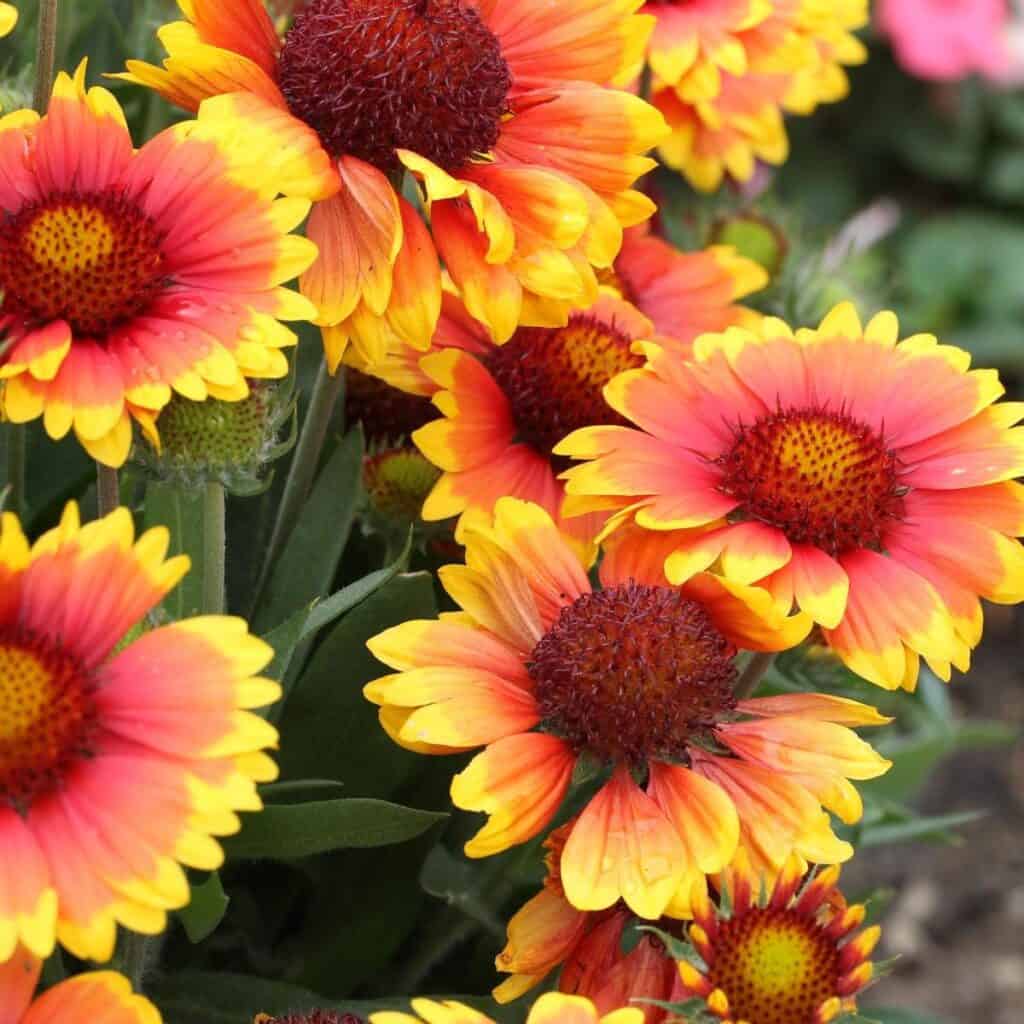

Whether mixing in summer favorites like mammoth sunflowers or trying out new plants like aquilegia, the added color and variety keep the garden engaging. This enhances the overall aesthetic and makes the space more enjoyable to spend time in.
Preparation and Soil Requirements


For a successful late-season garden, it is crucial to split the text into at least two sentences per paragraph, select the appropriate soil, apply necessary amendments, and prepare an ideal seedbed for optimal growth.
Choosing the Right Soil
Selecting the right soil is essential. Loamy soil is often the best choice for most flower seeds as it balances moisture retention and drainage. A mix of sand, silt, and clay provides good fertility and structure.
Gardeners should ensure the soil’s pH level is between 6.0 and 7.0. This range is suitable for many flowers, helping them absorb nutrients effectively.
To determine the soil type in your garden, perform a simple soil test. This will guide any adjustments and help you choose suitable flower seeds for July planting.
Soil Amendments and Fertilizers
To improve soil fertility, organic matter should be added. Compost and manure are excellent choices. They enrich the soil with nutrients and enhance its structure. Spread a 2-3 inch layer of compost over the soil and mix it in thoroughly.
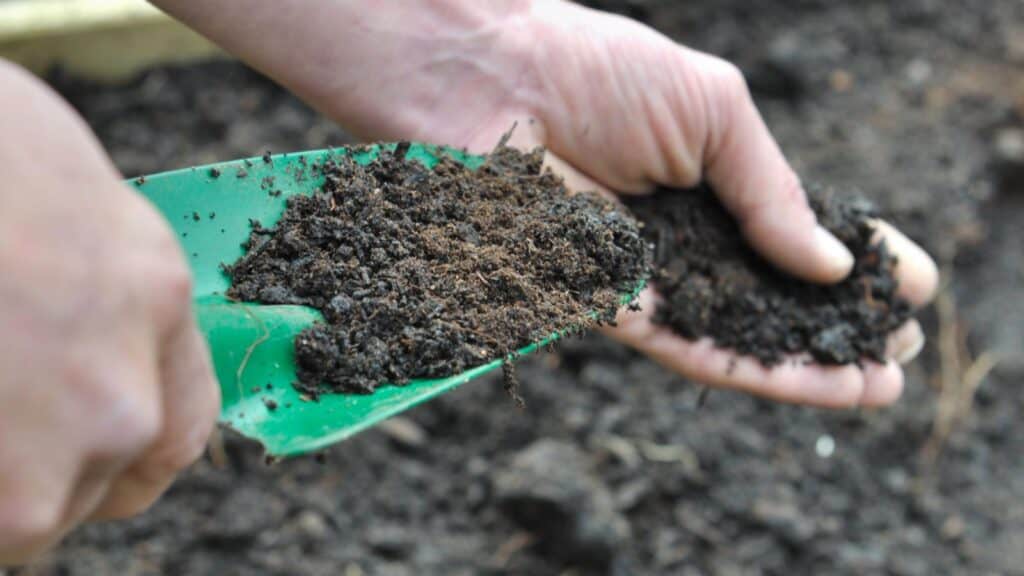

Using a balanced fertilizer, like a 10-10-10 (Nitrogen, Phosphorus, Potassium) mix, supports the growth of strong, healthy plants. Follow the package instructions for proper application rates. Avoid over-fertilizing, as this can harm the plants and the environment.
For sandy or clay soils, amend with peat moss or coir to improve water retention and drainage.
Creating the Perfect Seed Bed
A well-prepared seedbed is vital for seed germination. Start by clearing weeds, rocks, and debris from the planting area. This ensures seeds have the best conditions to sprout and grow.
Next, loosen the soil to a 6-8 inches depth using a garden fork or tiller. This improves root penetration and drainage. Rake the soil to create a smooth, even surface.
Finally, water the soil lightly before sowing. Moist, not soggy, soil helps seeds germinate effectively. Don’t forget to plant seeds according to their specific depth and spacing requirements.
Tips for Successful Germination
Proper watering, optimal light and temperature conditions, and protecting seeds from pests are crucial for successful germination.
Watering Best Practices
Watering seeds correctly is important. Use a spray bottle or light mist to water seeds so they don’t get displaced. The soil should be moist but not soggy. Overwatering can cause seeds to rot, while underwatering can prevent them from sprouting.
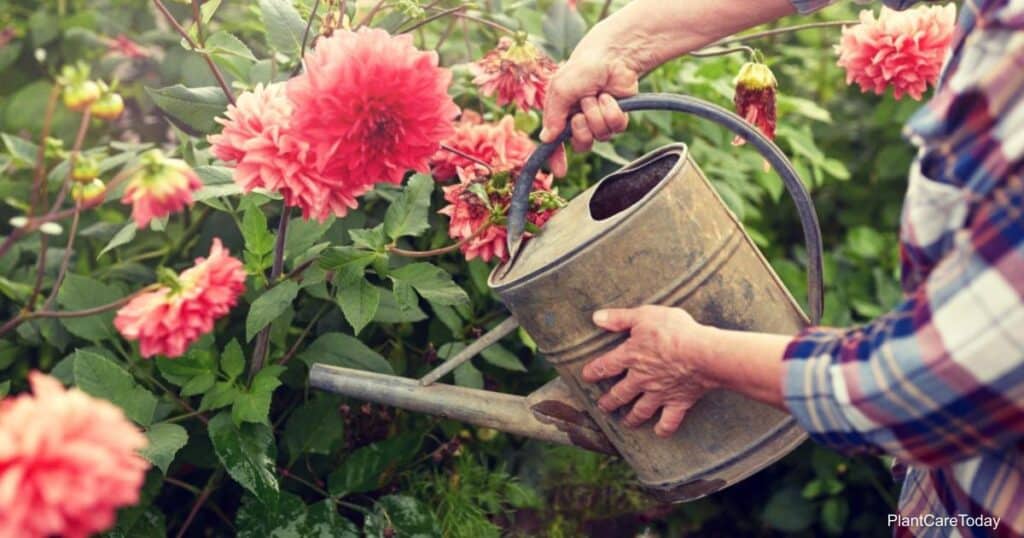

Water seeds daily, especially in hot climates. However, adjust based on soil conditions. Check the top inch of soil; if it feels dry, it’s time to water. For outdoor planting, early morning watering helps prevent evaporation.
Mulch can also help to retain moisture. Applying a thin layer around the seeds can help. Always ensure that seeds are covered enough to stay moist but not so much that they lack air.
Light and Temperature Needs
Light and temperature are key for seed germination. Most flower seeds need about 12-16 hours of light daily for best results. A sunny windowsill or grow light can provide the necessary light.
Ensure the seed trays or garden beds receive enough light. Some seeds, like sunflowers, need full sun, so plant them in open areas. Other seeds may require partial shade.
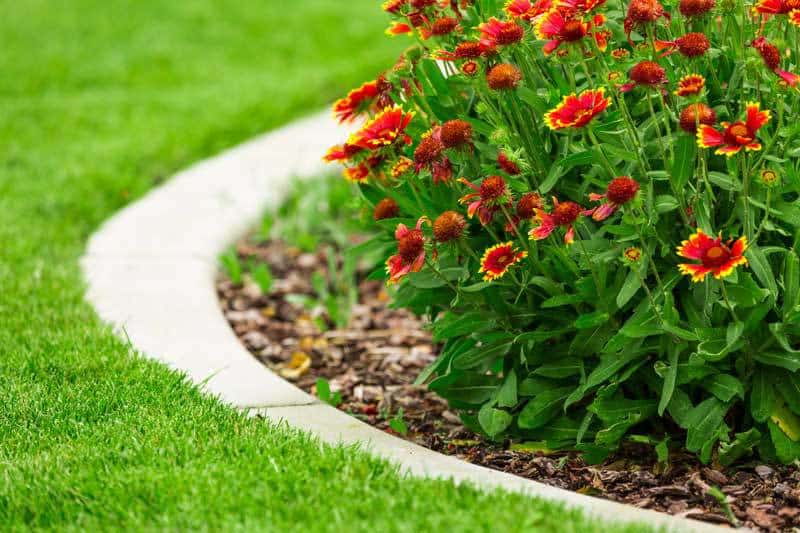

Temperature impacts germination rates. Most flower seeds germinate best between 65-75°F. Check the ideal temperature for each flower type. Use a soil thermometer to gauge temperature. In cooler climates, consider using a heating mat to maintain soil temperature.
Protecting Seeds from Pests
Pests can be a problem for germinating seeds. Birds, insects, and small mammals might dig up or eat the seeds.
Cover the seeded area with a fine mesh or row cover to protect it from birds and larger pests.
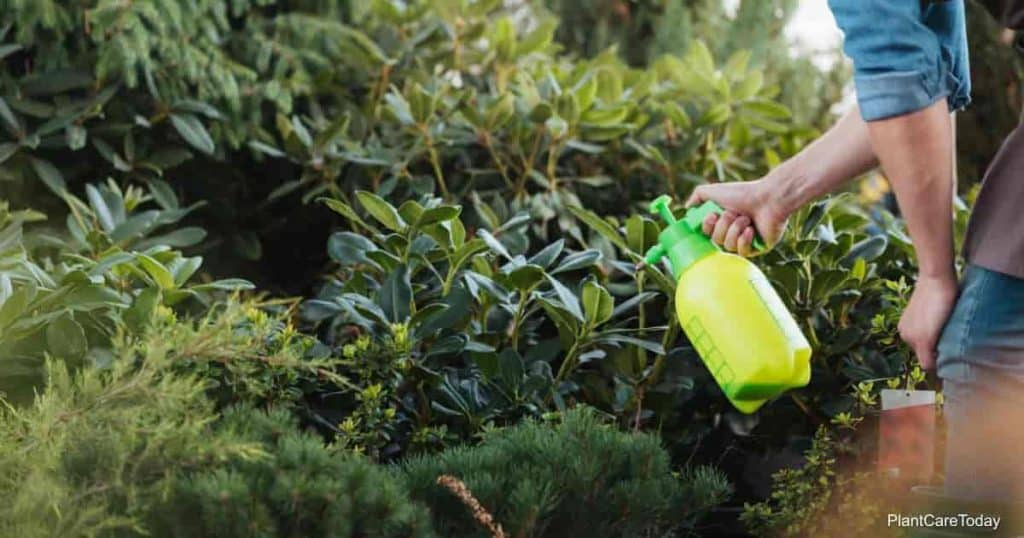

Use organic insecticides or natural predators like ladybugs to control harmful insects.
Companion planting can also repel pests. For instance, marigolds can deter nematodes and other insects.
Regularly inspect for pests and take action as soon as you notice any problems.
Neem oil is a safe option for many garden pests. Using these methods helps ensure that seeds can germinate without being disturbed.




